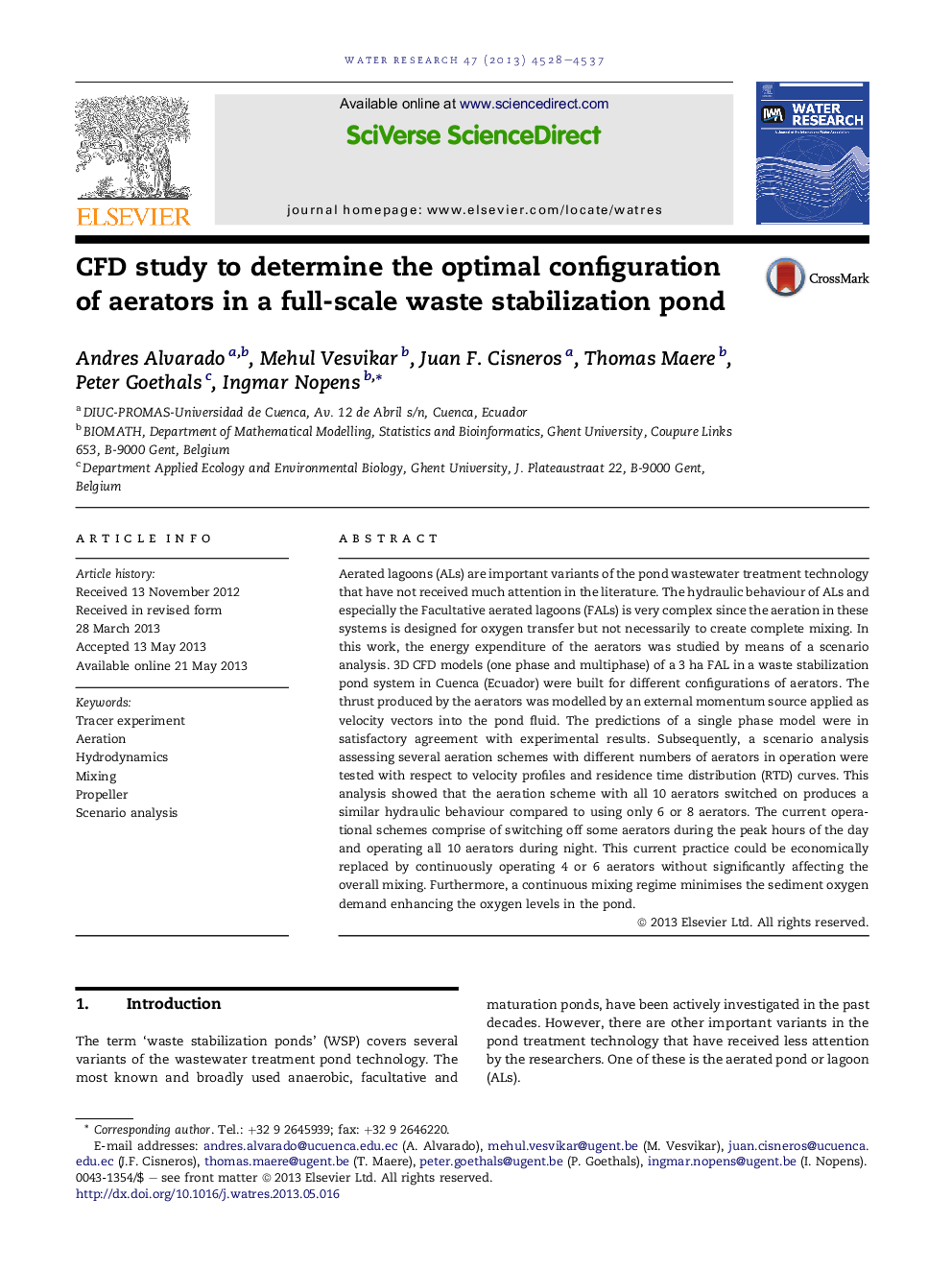| Article ID | Journal | Published Year | Pages | File Type |
|---|---|---|---|---|
| 4481998 | Water Research | 2013 | 10 Pages |
•A validated 3D CFD model describes the hydrodynamics in aerated lagoons.•The propeller thrust is modelled by an external equivalent velocity vectors.•CFD model could be used as a decision support tool for multi-objective optimisation.•Energy saving is possible by operating less aerators without affecting the hydraulics.
Aerated lagoons (ALs) are important variants of the pond wastewater treatment technology that have not received much attention in the literature. The hydraulic behaviour of ALs and especially the Facultative aerated lagoons (FALs) is very complex since the aeration in these systems is designed for oxygen transfer but not necessarily to create complete mixing. In this work, the energy expenditure of the aerators was studied by means of a scenario analysis. 3D CFD models (one phase and multiphase) of a 3 ha FAL in a waste stabilization pond system in Cuenca (Ecuador) were built for different configurations of aerators. The thrust produced by the aerators was modelled by an external momentum source applied as velocity vectors into the pond fluid. The predictions of a single phase model were in satisfactory agreement with experimental results. Subsequently, a scenario analysis assessing several aeration schemes with different numbers of aerators in operation were tested with respect to velocity profiles and residence time distribution (RTD) curves. This analysis showed that the aeration scheme with all 10 aerators switched on produces a similar hydraulic behaviour compared to using only 6 or 8 aerators. The current operational schemes comprise of switching off some aerators during the peak hours of the day and operating all 10 aerators during night. This current practice could be economically replaced by continuously operating 4 or 6 aerators without significantly affecting the overall mixing. Furthermore, a continuous mixing regime minimises the sediment oxygen demand enhancing the oxygen levels in the pond.
